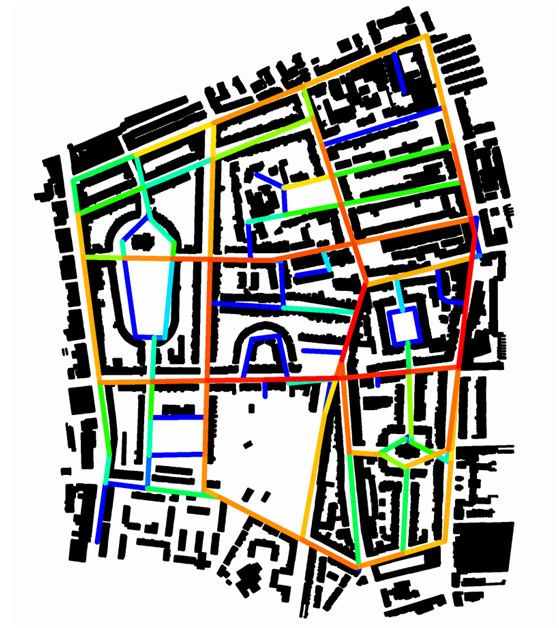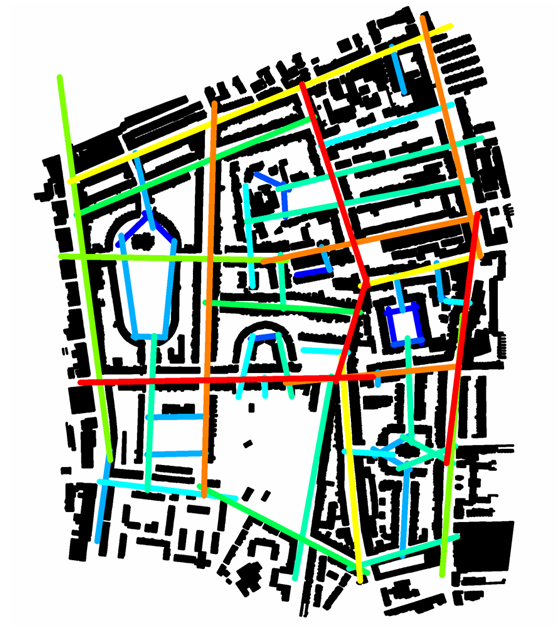How are spatial relations measured and analysed?
Various methods of analysis have been developed to detect the configurational properties of urban settlements.
1. Segment angular analysis
These methods can be applied to both the axial segment maps and the road centre line segment maps.
a. Choice analysis
Segment angular choice measures the through movement potential of linear structures (eg. streets and corridors).
The layout is coloured according to segment angular choice values (A). Red denotes a high through movement potential and blue indicates a low through movement potential. This enables us to understand the foreground network, highlighted in red and orange, and background network highlighted in the other colours. The foreground network highlights the shops and cafés of a place. The background network highlights the residential areas of a place.
b. Integration analysis
Segment angular integration measures the to-movement potentials of linear structures.
The layout is coloured according to segment angular integration values (B). Red denotes a high to-movement potential and blue indicates a low to-movement potential.
c. Multiple scale analysis
Both integration and choice can be calculated at different radii to capture spatial configuration at different scales. Metric radii have been shown to be effective in capturing different modes of movement. Higher radii corresponds to vehicular movement and lower radii corresponds to pedestrian movement. These measures can be overlapped to identify spaces with multi-modal and multi-scale movement potential.
d. Other measures
Other measures include intelligibility and synergy. Intelligibility measures the degree to which a local spatial property (e.g. the numer of immediate connections a line has) is a reliable guide to the importance of that line in the system as a whole. High intelligibility implies that the whole can be read from the parts. Synergy is a similar measure.
See the tutorial for further information.
2. Other Methods
Other methods include VGA and agent analysis, etc. Please refer to the glossary.







